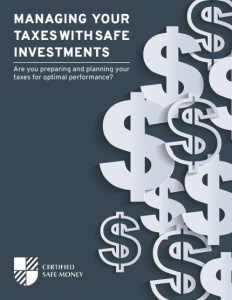Key Takeaways
- Annuities can have significant tax implications depending on the type and structure of your investment, making tax planning essential.
- Understanding the tax treatment of annuity withdrawals can help you maximize your retirement income while minimizing tax liabilities.
How Will Your Annuity Affect Your Taxes? Here’s What to Expect and Plan For
When planning for retirement, annuities often come into play as a reliable source of income. However, how they affect your taxes can be complex, varying based on the type of annuity, how it’s funded, and when you begin to withdraw from it. With 2024 bringing about some subtle yet impactful changes in tax laws, it’s crucial to understand what to expect and how to plan for these tax implications.
The Taxation of Qualified vs. Non-Qualified Annuities
Understanding how your annuity is taxed starts with knowing whether it’s a qualified or non-qualified annuity. A qualified annuity is funded with pre-tax dollars, typically from an IRA or 401(k), meaning you haven’t yet paid taxes on this money. Because of this, when you start withdrawing from a qualified annuity, the entire withdrawal amount is subject to ordinary income tax.
On the other hand, non-qualified annuities are funded with after-tax dollars. Since you’ve already paid taxes on the money used to purchase the annuity, only the earnings on the investment are taxed when you make withdrawals. The original principal you invested is not taxed again, which can make non-qualified annuities a more tax-efficient option for some investors.
The Role of the Annuity Payout Option in Taxes
The way you choose to receive your annuity payouts also plays a crucial role in your tax liability. For instance, if you opt for a lump-sum payout, you could be hit with a hefty tax bill, as the entire amount may be taxed in the year you receive it. This could push you into a higher tax bracket, resulting in an even larger tax burden.
Alternatively, if you choose to receive periodic payments, such as monthly or annual distributions, you can spread out your tax liability over several years. This approach can help you stay in a lower tax bracket, reducing the overall amount of taxes you pay. Each payment you receive from a qualified annuity is fully taxable, while for non-qualified annuities, each payment is partially taxable, with a portion representing the return of your principal, which isn’t taxed.
Understanding Exclusion Ratios for Non-Qualified Annuities
One of the most important concepts to grasp when it comes to non-qualified annuities is the exclusion ratio. This ratio determines the taxable and non-taxable portions of each payment you receive. Essentially, the exclusion ratio is calculated by dividing the amount you invested in the annuity by the total expected return.
For example, if you invested $100,000 in a non-qualified annuity and your total expected return is $200,000, the exclusion ratio would be 50%. This means that 50% of each payment you receive is a return of your principal and is not taxed, while the other 50% is considered earnings and is subject to ordinary income tax. Understanding and applying the exclusion ratio can significantly reduce your tax liability over the life of the annuity.
The Impact of Required Minimum Distributions (RMDs)
If your annuity is held within a qualified retirement plan, such as an IRA, it will be subject to Required Minimum Distributions (RMDs). Starting at age 73, you’re required by law to start taking withdrawals from these accounts, whether you need the money or not. The amount of the RMD is based on your account balance and life expectancy, and each withdrawal is subject to ordinary income tax.
Failing to take your RMDs can result in substantial penalties—up to 50% of the amount you were supposed to withdraw. It’s important to plan for these distributions and understand how they will affect your taxable income. While the Secure Act 2.0 has pushed the RMD age to 73 in 2024, it’s essential to keep an eye on your RMD obligations, especially if you have multiple retirement accounts, as the tax burden can be significant.
How Annuity Withdrawals Are Taxed
When it comes time to withdraw from your annuity, the taxation method differs based on whether the annuity is qualified or non-qualified. For qualified annuities, withdrawals are taxed as ordinary income because they were funded with pre-tax dollars. This means that every dollar you take out will be taxed at your current income tax rate.
For non-qualified annuities, the tax treatment is a bit more nuanced. The IRS applies what’s known as the Last-In, First-Out (LIFO) rule, meaning your earnings come out first and are taxed as ordinary income. Only after all the earnings have been withdrawn do you start withdrawing your principal, which is not taxed. This can lead to a higher tax bill in the early years of withdrawal, especially if the annuity has grown significantly.
Estate Taxes and Annuities
An often-overlooked aspect of annuity taxation is how they are treated in the event of your death. Annuities are considered part of your estate, and if the total value of your estate exceeds the federal estate tax exemption limit, your heirs could be liable for estate taxes on the annuity’s value.
Additionally, if your beneficiaries receive a lump sum payout from your annuity, they could face significant income tax obligations. However, some annuities offer options to spread out payments over several years, which can help reduce the tax burden on your heirs. Estate planning is a crucial component when considering how an annuity fits into your overall financial strategy.
Strategies for Minimizing Annuity-Related Taxes
Given the potential tax implications of annuities, it’s wise to employ strategies to minimize your tax burden. One common strategy is to stagger your annuity withdrawals over several years to avoid pushing yourself into a higher tax bracket. By carefully planning your withdrawals, you can manage your income and tax liability more effectively.
Another strategy is to consider using a Roth IRA to fund your annuity. Since Roth IRAs are funded with after-tax dollars, the withdrawals from a Roth IRA-funded annuity are generally tax-free, provided you meet certain conditions. This can be a powerful way to generate tax-free income in retirement, though it’s important to consider the trade-offs, such as the potential for lower initial contributions due to the tax impact of funding the Roth IRA.
Annuities and State Income Taxes
While federal taxes are a significant consideration, it’s also important to account for state income taxes. Some states exempt annuity income from taxation, while others do not. Additionally, the state in which you reside during retirement can impact your tax liability.
For instance, moving from a high-tax state to a no-income-tax state could significantly reduce the taxes you owe on your annuity income. This is a consideration for many retirees looking to maximize their income. Planning for state taxes involves understanding the tax laws of your current and potential future states of residence.
The Potential for Tax Deferral
One of the key benefits of an annuity is its ability to defer taxes on the earnings until you start receiving payments. This tax deferral can allow your investment to grow without the drag of annual taxes, potentially leading to a larger payout when you eventually start withdrawing funds. However, it’s important to balance the benefit of tax deferral against the potential for higher taxes in the future, especially if you expect to be in a higher tax bracket during retirement.
How Legislation Could Change Annuity Taxation
The tax landscape is always subject to change, and annuity taxation is no exception. Legislative changes can alter how annuities are taxed, potentially impacting your retirement planning. For instance, any adjustments to tax rates, the introduction of new tax brackets, or changes to the treatment of retirement income could all affect the taxes you pay on your annuity.
It’s crucial to stay informed about potential tax law changes and to work with a financial advisor who can help you navigate these changes. By staying proactive, you can adjust your retirement strategy as needed to minimize the impact of any new legislation.
Wrapping Up Your Tax Strategy for Annuities
Tax planning is an essential component of managing your annuity, and by understanding the various tax implications, you can make informed decisions that align with your retirement goals. From the choice between a qualified or non-qualified annuity to the timing and method of your withdrawals, every decision has a tax consequence.
As 2024 unfolds, staying updated on the latest tax laws and leveraging strategies like tax deferral, Roth IRA funding, and strategic withdrawals can help you maximize your retirement income while minimizing your tax burden. Annuities can be a powerful tool in your retirement portfolio, but only if you fully understand and plan for the tax implications.
The Final Word on Annuity Taxes
As you prepare for retirement, remember that how you manage your annuity can significantly impact your taxes. With careful planning, you can navigate the complexities of annuity taxation, ensuring that your retirement years are financially secure. Take the time to consult with financial and tax professionals to optimize your strategy, and always stay informed about potential changes in tax laws that could affect your retirement income.














